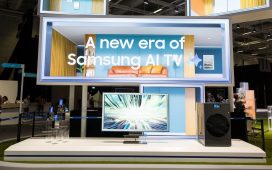The report comes from Korean publication Choson Biz, which published an article about TSMC and Samsung’s 3nm woes. Both companies are reportedly still stuck in the 50% to 60% yield range, which basically means almost half of each chip produced is either not fully functional (and perhaps salvageable) or completely broken. Improving yields means reducing costs for producing chips, but these nodes were expected to already be yielding at 60% by now, which could indicate a wider issue, and that means costs will continue to be high.
Choson Biz also suggested that the recent heating problems with the latest iPhone 15 was due to TSMC’s 3nm node (dubbed N3) being somehow incomplete or dysfunctional. This sentiment has been pretty common in the tech press, but so far there’s been no concrete evidence that TSMC’s N3 process is actually broken like the struggles Intel had getting its 10nm process online. It is true that TSMC’s N3 process delivers less of an efficiency improvement relative to N5, as N5 did compared to N7, but that’s not the same as being broken.
There’s good reason to treat this report skeptically. Earlier this year, we heard good things about TSMC’s 3nm and Samsung’s 3nm. The EE Times reported that yields for the A17 and upcoming M3 were 55% (a “healthy level” at the time) and that every quarter yields should go up by 5%. Today, that would mean TSMC’s yields are at least 65%.
Meanwhile, Korean investment firm Hi Investment & Securities stated (via Kukmin Ilbo) in July that Samsung’s 3nm was yielding at 60% or more in July. Assuming that was the case, then yields are probably even higher today. Choson Biz alluded to this figure in its own report and denied it was true, claiming that the chip didn’t have any SRAM (also known as cache) and therefore it wasn’t a complete reflection of how well Samsung’s 3nm process yields.
It’s hard to judge the veracity of Choson Biz‘s report at the moment, since both TSMC and Samsung have very few 3nm customers. We’ll have another data point when AMD launches its Zen 5 CPUs in 2024, some of which will use TSMC’s N3. While that’s probably a year away, it takes quite a long time to increase yields on a cutting-edge node, and if TSMC and Samsung are starting at closer to 50% rather than 65%, then that makes a big difference when it comes to the cost of manufacturing, and the price of products.










